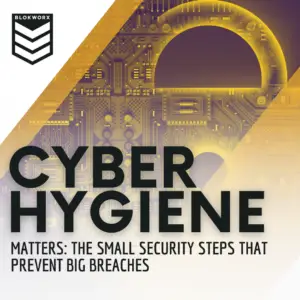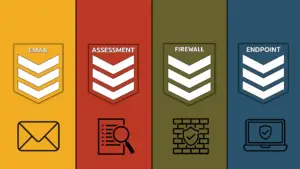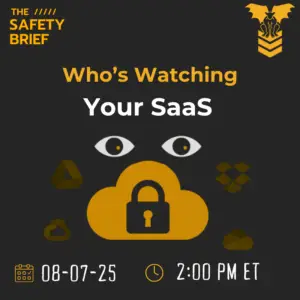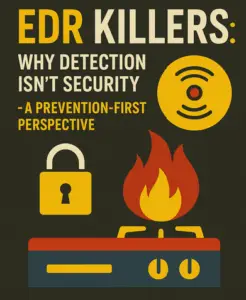be a leading cause of breaches. Weak passwords, outdated software, and
insufficient phishing awareness training remain some of the most significant
security gaps, leaving organizations vulnerable to cyberattacks.
A lack of cyber hygiene is no longer an oversight—it’s an open invitation for
attackers. Let’s explore why cyber hygiene is still one of the biggest
challenges in 2025 and the top security practices businesses need to
implement now.
Despite growing awareness of cybersecurity risks, many organizations still
fail at basic security measures. Consider these alarming statistics:
- 88% of data breaches are caused by human error (Verizon 2023 DBIR).
- 61% of breaches involve stolen or weak credentials.
- By 2026, 25% of security teams will rely on AI-driven automation to improve cyber hygiene (Gartner
Top 3 Cyber Hygiene Priorities for 2025
Here are the top three security practices your business should prioritize
this year:
1. Enforce Strong Passwords & Multi-Factor Authentication (MFA)
A weak password is like leaving your front door unlocked—it’s an easy way
for cybercriminals to access your account. Yet, many employees still reuse passwords or create
ones that are easy to guess.
✅ Require complex passwords and enforce regular password changes.
✅ Implement Multi-Factor Authentication (MFA) to add an extra layer
of security.
✅ Utilize password managers to prevent employees from storing
credentials insecurely.
2. Automate Software Updates & Patching
Cybercriminals exploit outdated software to gain access to systems. If your
business is delaying updates. You’re giving attackers a free pass to your
network.
✅ Enable automatic updates on all devices and software.
✅ Conduct regular vulnerability scans to identify and fix security
gaps.
✅ Keep third-party applications and plugins up to date—attackers
often target these first.
3. Conduct Regular Phishing Awareness Training
Phishing remains one of the biggest threats to organizations. Employees
clicking on malicious links or falling for email scams can result in
ransomware infections, data leaks, and credential theft.
✅ Train employees to spot phishing emails and verify suspicious
messages.
✅ Implement simulated phishing tests to assess employee awareness.
✅ Encourage a culture of reporting where employees feel comfortable flagging suspicious activity.
A Real-World Example: The Colonial Pipeline Ransomware Attack
One of the most devastating cyberattacks in recent history occurred in 2021 when hackers used a compromised password to access Colonial Pipeline’s network. The company’s VPN had no multi-factor authentication, making it easy for attackers to break in. This single mistake led to fuel shortages across the U.S. and millions in ransom payments. Had Colonial Pipeline enforced MFA and better password policies, the attack could have been prevented.
Building a Cybersecurity Mindset, Not Just Policies
At BLOKWORX, we believe that cyber hygiene isn’t just a checklist—it’s a mindset. Security should be proactive, not reactive, and it starts with fostering a culture of cybersecurity awareness across your organization. MSPs play a crucial role in educating their clients about making security part of daily operations. From enforcing zero-trust principles to automating security tasks, businesses must shift their mindset from compliance-based security to proactive defense.
Want to dive deeper into the essential cyber hygiene practices your business should implement in 2025?
Join us on the next Safety Brief episode as we break down cybersecurity best practices, real-world breach examples, and how to build a security-first mindset.
Don’t wait until it’s too late—secure your business today!





